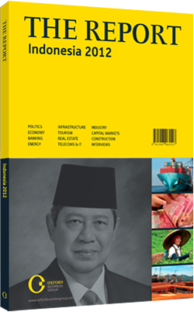A rising star: Sharia-compliant financing is an increasingly popular alternative
Home to the world’s largest Muslim population, Indonesia is in theory fertile territory for the development of Islamic finance, the practice of lending, investment, finance and insurance without interest rates or speculation. Still, in the South-east Asian region, it is neighbouring Muslim-majority Malaysia, which is a fraction of the size of Indonesia, that has historically been the market leader in this field. While sharia-compliant finance in Indonesia has to date been a lower priority for the government and regulators than in Malaysia, the market continues to grow as more consumers adopt these products.
ASSET GROWTH: In February 2011 Bank of Indonesia (BI), the country’s central bank and banking regulator, projected that assets held by Islamic banks in the country would grow by 55% over the course of the year. Although this sounds like a significant jump, it represents an increase only slightly larger than that registered in 2010. According to BI data, Indonesia’s Islamic banks, Islamic units of conventional banks and Islamic rural banks held $11.2bn in assets at the end of 2010, up 47% on the year and accounting for approximately 5% of total banking system assets – as opposed to about 20% in Malaysia.
This difference may be due to the fact that the concept is not as heavily promoted by the state as it is in Malaysia. Moreover, Indonesia is taking a different approach – BI’s board of sharia scholars has advocated and helped institute a more strict interpretation of sharia law than has Malaysia’s regulators, and one that is in line with the practices of Islamic banks in the oil-rich countries of the Arabian Peninsula. It is expected that an increase in sharia-compliant financial options should attract some of that wealth to Indonesia, in the form of foreign direct investment. Even non-Muslim countries such as Australia, South Korea, the UK, Germany and Canada are hoping to attract Gulf money in this way.
A DIFFERENT APPROACH: However, the central bank views Islamic finance primarily as an option for domestic consumers, and not necessarily as a tool for large-scale finance, according to its 2002 Blueprint of Islamic Banking Development in Indonesia.
This position runs counter to the approach of many countries, where Islamic versions of bonds and loans have been a popular method for attracting foreign investment and financing large-scale developments such as real estate projects. In fact, it was in those areas – and not in deposit banking – that the Islamic financial institutions of the Arabian Peninsula experienced difficulties in the wake of the global economic slowdown in 2008 and 2009.
For now, much of the market growth in Indonesia is happening because locals are taking notice of the Islamic banking alternative, and a small number of them are choosing it. As of June 2011, outstanding financing at Indonesia’s 11 sharia banks and 23 sharia units of other banks stood at Rp82.6trn ($9.9bn), according to the central bank’s data. However, this activity is still relatively limited when viewed in the context of the conventional banking system.
Indeed, as of this same date, outstanding loans at the country’s conventional commercial banks amounted to Rp1951trn ($234.1bn).
THE BENEFITS: While BI has not made growth in Islamic finance an explicit aim, one expected benefit of the practice is that it will add stability to the financial system. Islamic finance seeks to eliminate high-risk financial instruments such as the credit-default swaps and other derivatives that helped cause the more recent financial crisis. It instead aims to ensure that every transaction is linked to the movement or production of goods in the real economy, and that characteristic has led advocates to claim that Islamic banking is inherently more stable than conventional methods. The crisis’s aftermath in the Arabian Peninsula has cast doubt on that particular theory, but for BI, Islamic finance is a beneficial component of the broader banking system and can contribute to mid- to long-term price stability.
You have reached the limit of premium articles you can view for free.
Choose from the options below to purchase print or digital editions of our Reports. You can also purchase a website subscription giving you unlimited access to all of our Reports online for 12 months.
If you have already purchased this Report or have a website subscription, please login to continue.

